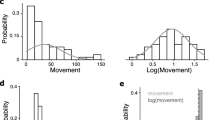Abstract
The term “startle” describes a sudden involuntary movement of the body in response to an unexpected stimulus. The startle reflex in humans is a normal physiologic symmetric flexor response present starting around 6 weeks of age and remaining for life. Conditions with an abnormal or exaggerated startle are collectively referred to as startle syndromes, and are a rare, heterogeneous group of disorders. The startle syndromes are categorized into three broad groups: (1) hyperekplexia, (2) stimulus-induced disorders, and (3) neuropsychiatric startle disorders. While startle syndromes are often relatively benign, medical emergencies can arise as complications from the abnormal startle. Most concerning is the increased morbidity and mortality from apneic episodes in patients with hyperekplexia, which can unfortunately lead to sudden death. Therefore, prompt recognition and treatment of this disorder is imperative. In this chapter, we review the normal human startle reflex and then provide an overview of the startle syndromes, with a particular focus on hyperekplexia given the movement disorder emergencies seen in this syndrome.
Access this chapter
Tax calculation will be finalised at checkout
Purchases are for personal use only
Similar content being viewed by others
References
Wilkins DE, Hallett M, Wess MM. Audiogenic startle reflex of man and its relationship to startle syndromes. A review Brain. 1986;109(Pt 3):561–73.
Bakker MJ, van Dijk JG, van den Maagdenberg AM, Tijssen MA. Startle syndromes. Lancet Neurol. 2006;5(6):513–24.
Brown P, Rothwell JC, Thompson PD, Britton TC, Day BL, Marsden CD. New observations on the normal auditory startle reflex in man. Brain. 1991;114(Pt 4):1891–902.
Jacobson E. Response to sudden unexpected stimulus. J Exp Psychol. 1926;9:19–25.
Brown P, Rothwell JC, Thompson PD, Britton TC, Day BL, Marsden CD. The hyperekplexias and their relationship to the normal startle reflex. Brain. 1991;114(Pt 4):1903–28.
Brown P, Day BL, Rothwell JC, Thompson PD, Marsden CD. The effect of posture on the normal and pathological auditory startle reflex. J Neurol Neurosurg Psychiatry. 1991;54(10):892–7.
Brown P. The startle syndrome. Mov Disord. 2002;17(Suppl 2):S79–82.
Lang PJ, Bradley MM, Cuthbert BN. Emotion, attention, and the startle reflex. Psychol Rev. 1990;97(3):377–95.
Dreissen YE, Tijssen MA. The startle syndromes: physiology and treatment. Epilepsia. 2012;53(Suppl 7):3–11.
Lanska DJ. Jumping Frenchmen, Miryachit, and Latah: culture-specific Hyperstartle-plus syndromes. Front Neurol Neurosci. 2018;42:122–31.
Kirstein L, Silfverskiold BP. A family with emotionally precipitated drop seizures. Acta Psychiatr Neurol Scand. 1958;33(4):471–6.
Suhren OBG, Tuynman A. Hyperexplexia: a hereditary startle syndrome. J Neurol Sci. 1966;3:577–605.
Thomas RH, Chung SK, Wood SE, Cushion TD, Drew CJ, Hammond CL, et al. Genotype-phenotype correlations in hyperekplexia: apnoeas, learning difficulties and speech delay. Brain. 2013;136(Pt 10):3085–95.
Balint B, Thomas R. Hereditary Hyperekplexia overview. In: Adam MP, Ardinger HH, Pagon RA, Wallace SE, LJH B, Stephens K, et al., editors. GeneReviews((R)). Seattle (WA); 1993.
Tijssen MA, Schoemaker HC, Edelbroek PJ, Roos RA, Cohen AF, van Dijk JG. The effects of clonazepam and vigabatrin in hyperekplexia. J Neurol Sci. 1997;149(1):63–7.
Mine J, Taketani T, Yoshida K, Yokochi F, Kobayashi J, Maruyama K, et al. Clinical and genetic investigation of 17 Japanese patients with hyperekplexia. Dev Med Child Neurol. 2015;57(4):372–7.
Stewart WA, Wood EP, Gordon KE, Camfield PR. Successful treatment of severe infantile hyperekplexia with low-dose clobazam. J Child Neurol. 2002;17(2):154–6.
Vigevano F, Di Capua M, Dalla Bernardina B. Startle disease: an avoidable cause of sudden infant death. Lancet. 1989;1(8631):216.
Lynch JW, Zhang Y, Talwar S, Estrada-Mondragon A. Glycine receptor drug discovery. Adv Pharmacol. 2017;79:225–53.
Zou G, Chen Q, Chen K, Zuo X, Ge Y, Hou Y, et al. Human Hyperekplexic mutations in Glycine receptors disinhibit the brainstem by hijacking GABAA receptors. iScience. 2019;19:634–46.
Author information
Authors and Affiliations
Corresponding author
Editor information
Editors and Affiliations
Electronic Supplementary Material
Two patients with hereditary hyperekplexia due to a glycine receptor mutation appear in this video segment. Lack of habituation to nose tap, exaggerated startle response, and marked axial hypertonia are evident. The next video, taken in the neonatal intensive care unit, is an example of how not to examine these babies: one nose tap is sufficient, and the Morrow reflex is likely not needed. The final segment, courtesy of Peter Schofield, demonstrates a newborn Poll-Hereford calf with hereditary hyperekplexia, displaying the same features of lack of habituation to tap and marked sustained axial hypertonic contractions (MP4 139237 kb)
Rights and permissions
Copyright information
© 2022 Springer Nature Switzerland AG
About this chapter
Cite this chapter
Stahl, C.M. (2022). Startle Disorders. In: Frucht, S.J. (eds) Movement Disorder Emergencies. Current Clinical Neurology. Humana, Cham. https://doi.org/10.1007/978-3-030-75898-1_19
Download citation
DOI: https://doi.org/10.1007/978-3-030-75898-1_19
Published:
Publisher Name: Humana, Cham
Print ISBN: 978-3-030-75897-4
Online ISBN: 978-3-030-75898-1
eBook Packages: MedicineMedicine (R0)




